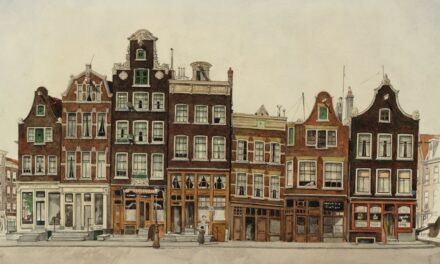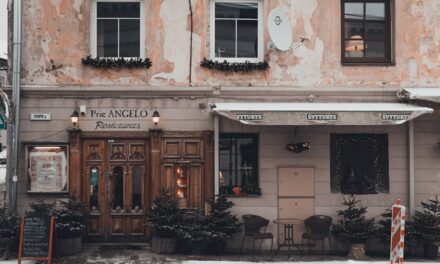Alonso Cano was born in 1601 in Granada, Spain, into a family steeped in artistic tradition. His father, a painter, and his mother, a skilled embroiderer, provided a nurturing environment that fostered his early artistic inclinations. From a young age, Cano exhibited a remarkable talent for drawing, which led him to pursue formal training in the arts.
He was initially apprenticed to the renowned painter and sculptor, Juan de Sevilla, where he honed his skills in both painting and sculpture. This early exposure to the techniques of the Spanish Renaissance would profoundly shape his artistic journey. Cano’s education was not limited to the practical aspects of art; he also immersed himself in the study of classical literature and philosophy.
This intellectual foundation allowed him to develop a unique perspective on art that combined technical prowess with a deep understanding of human emotion and spirituality. His formative years in Granada, a city rich in Moorish architecture and artistic heritage, further influenced his aesthetic sensibilities. The interplay of light and shadow in the Alhambra and the intricate details of Islamic art left an indelible mark on Cano’s work, setting the stage for his future contributions to Spanish art.
Summary
- Alonso Cano was born in Granada, Spain in 1601 and received his early education at the Cathedral of Granada.
- Cano’s artistic style was heavily influenced by the works of Michelangelo and Raphael, as well as the Baroque style of his contemporary, Diego Velázquez.
- In Seville, Cano worked as a painter and sculptor, creating religious art for various churches and monasteries.
- Cano moved to Madrid in 1638, where he received royal patronage from King Philip IV and became the court painter and architect.
- Italian art had a significant impact on Cano’s work, particularly in his use of dramatic lighting and emotional expression in his religious paintings.
Artistic Style and Influences
The Dynamic Composition
His works often exhibit a dynamic composition, with figures that convey a sense of movement and emotional depth. Cano’s ability to capture the human form with anatomical precision while infusing it with a spiritual essence distinguishes him from his contemporaries.
Influence of Italian Masters
His paintings are imbued with a sense of drama, often employing chiaroscuro to enhance the emotional impact of his subjects. Cano was profoundly influenced by the works of Italian masters such as Michelangelo and Caravaggio. The dramatic use of light and shadow, as well as the emphasis on human emotion found in Caravaggio’s paintings, resonated deeply with Cano.
A Unique Artistic Voice
He adopted these techniques, integrating them into his own style while maintaining a distinctly Spanish sensibility. Additionally, the classical ideals of beauty espoused by Michelangelo inspired Cano’s approach to form and composition. This synthesis of influences resulted in a unique artistic voice that would leave a lasting imprint on Spanish art.
Cano’s Work in Seville
In the early 1620s, Alonso Cano moved to Seville, a vibrant cultural hub that would become the backdrop for much of his artistic output. During this period, he became associated with the influential Seville school of painting, which was known for its rich colour palette and emotive subject matter. Cano’s work during this time reflects the city’s dynamic artistic environment, as he engaged with fellow artists and patrons who were eager to explore new themes and techniques.
One of Cano’s most significant contributions to Seville was his role in the decoration of churches and religious institutions. His altarpieces and frescoes adorned numerous chapels, showcasing his ability to convey complex theological narratives through visual art. Notable works from this period include “The Immaculate Conception,” which exemplifies his mastery of colour and composition.
The painting’s ethereal quality and intricate details demonstrate Cano’s skill in creating a sense of divine presence, making it a quintessential example of Baroque religious art.
Move to Madrid and Royal Patronage
Cano’s move to Madrid in 1640 marked a pivotal moment in his career as he sought greater recognition and opportunities within the royal court. The capital city was a burgeoning centre for the arts, attracting talented individuals from across Spain and beyond. In Madrid, Cano quickly gained the attention of King Philip IV, who became one of his most important patrons.
This royal endorsement not only elevated Cano’s status but also provided him with access to prestigious commissions that would further solidify his reputation. During this period, Cano produced several notable works for the royal family and various religious institutions. His ability to navigate the complexities of court life while maintaining his artistic integrity is commendable.
The influence of royal patronage allowed him to experiment with new techniques and themes, resulting in some of his most celebrated pieces. His work during this time reflects a heightened sense of grandeur and sophistication, as he sought to impress both the monarchy and the public with his artistic prowess.
The Influence of Italian Art on Cano’s Work
The impact of Italian art on Alonso Cano’s oeuvre cannot be overstated. His exposure to Italian Renaissance principles during his formative years laid the groundwork for his stylistic development. The fluidity of form and emotional expressiveness found in Italian works resonated deeply with Cano, prompting him to incorporate these elements into his own creations.
This influence is particularly evident in his approach to figure composition, where he often employed dynamic poses that evoke a sense of movement and vitality. Cano’s engagement with Italian art extended beyond mere imitation; he synthesised these influences with his own cultural context to create something distinctly Spanish. His ability to merge Italian techniques with local traditions resulted in a unique artistic language that appealed to both contemporary audiences and future generations.
The interplay between Italian influences and Spanish sensibilities is perhaps best exemplified in his religious works, where he captured the fervour of devotion while maintaining an air of elegance that is characteristic of Baroque art.
Cano’s Sculpture and Architectural Contributions
Master of Multiple Mediums
In addition to his prowess as a painter, Alonso Cano was also an accomplished sculptor and architect. His versatility allowed him to explore various mediums, contributing significantly to the artistic landscape of 17th-century Spain.
Sculpting Emotion and Life
Cano’s sculptures are notable for their lifelike quality and emotional resonance, often depicting religious figures with an intensity that draws viewers into their narratives. His ability to convey complex emotions through stone is a testament to his technical skill and deep understanding of human expression.
Architectural Achievements
Cano’s architectural contributions are equally noteworthy, particularly in his role as an architect for several churches in Madrid. His designs reflect a keen understanding of space and proportion, blending elements of Baroque architecture with traditional Spanish styles. One of his most significant architectural achievements is the design of the Church of San Isidro, which showcases his ability to create harmonious spaces that enhance the spiritual experience of worshippers. Through both sculpture and architecture, Cano left an indelible mark on the cultural fabric of Spain.
Religious Art and Iconography in Cano’s Work
Religious themes dominate much of Alonso Cano’s body of work, reflecting the deeply spiritual context in which he operated. His paintings often depict biblical narratives or saints, rendered with an emotional intensity that invites contemplation and reverence. Cano’s mastery of iconography allows him to convey complex theological concepts through visual means, making his works accessible to both educated elites and the general populace.
One notable aspect of Cano’s religious art is his innovative approach to iconography. He frequently reinterpreted traditional themes, infusing them with fresh perspectives that resonated with contemporary audiences. For instance, his portrayal of the Virgin Mary often emphasises her maternal qualities, presenting her as both a divine figure and a relatable human presence.
This duality enhances the emotional impact of his works, inviting viewers to engage with their faith on a personal level.
Cano’s Personal Life and Controversies
Despite his artistic achievements, Alonso Cano’s personal life was marked by turmoil and controversy. He faced numerous challenges throughout his career, including conflicts with fellow artists and patrons that sometimes overshadowed his professional accomplishments. His temperament was known to be volatile; he had a reputation for being passionate yet contentious, which occasionally led to disputes over artistic direction or financial matters.
Cano’s personal struggles were further complicated by tragic events in his life, including the death of loved ones that deeply affected him emotionally. These experiences often found their way into his art, imbuing it with a sense of melancholy that resonates with viewers even today. Despite these challenges, Cano remained dedicated to his craft, producing remarkable works that continue to inspire admiration for their beauty and depth.
Legacy and Influence on Spanish Art
Alonso Cano’s legacy is profound; he is regarded as one of the most significant figures in Spanish Baroque art. His innovative approach to painting, sculpture, and architecture set new standards for artistic excellence during his time and influenced subsequent generations of artists. His ability to blend realism with idealism created a unique aesthetic that resonated deeply within Spanish culture.
Cano’s impact can be seen in the works of later artists who drew inspiration from his techniques and themes. His emphasis on emotional expression paved the way for future movements within Spanish art, including Romanticism and even aspects of Modernism. The enduring relevance of Cano’s work is evident in contemporary discussions about the intersection of art and spirituality, as well as the exploration of human emotion through visual media.
Notable Works by Alonso Cano
Among Alonso Cano’s extensive oeuvre are several notable works that exemplify his artistic genius. One such piece is “The Virgin with Child,” which showcases his ability to capture tenderness and maternal love through delicate brushwork and thoughtful composition. Another significant work is “The Martyrdom of Saint Andrew,” where Cano employs dramatic lighting and dynamic poses to convey the intensity of martyrdom.
Cano’s altarpieces also deserve mention; they are characterised by their intricate details and emotive power. The “Altarpiece of San Isidro” stands out as a prime example of his ability to merge narrative depth with visual splendour. Each figure within these compositions tells a story, inviting viewers into a world where faith and artistry intertwine seamlessly.
The Continuing Relevance of Cano’s Art
The relevance of Alonso Cano’s art endures well beyond his lifetime; it continues to resonate with audiences today due to its emotional depth and technical brilliance. Contemporary artists often look back at Cano’s work for inspiration, recognising the timeless themes he explored—faith, humanity, and emotion—within their own practices. His ability to evoke profound feelings through visual means remains an aspiration for many modern creators.
Moreover, exhibitions showcasing Cano’s work have gained popularity in recent years as scholars seek to re-evaluate his contributions within the broader context of European art history. As interest in Baroque art continues to grow globally, Alonso Cano’s legacy serves as a reminder of the power art holds in expressing complex human experiences across time and culture. His works invite ongoing dialogue about spirituality, beauty, and the role of the artist in society—conversations that remain as relevant today as they were during his lifetime.
For those interested in the techniques and methods used by artists, a related article worth exploring is “Erasing and Correcting in Pastel Work: Common Methods”. This article delves into the various ways artists can correct mistakes and make adjustments in their pastel artwork, providing valuable insights into the creative process. Understanding these techniques can enhance one’s appreciation for the skill and precision required in creating art, much like the intricate works of the artist Alonso Cano.



